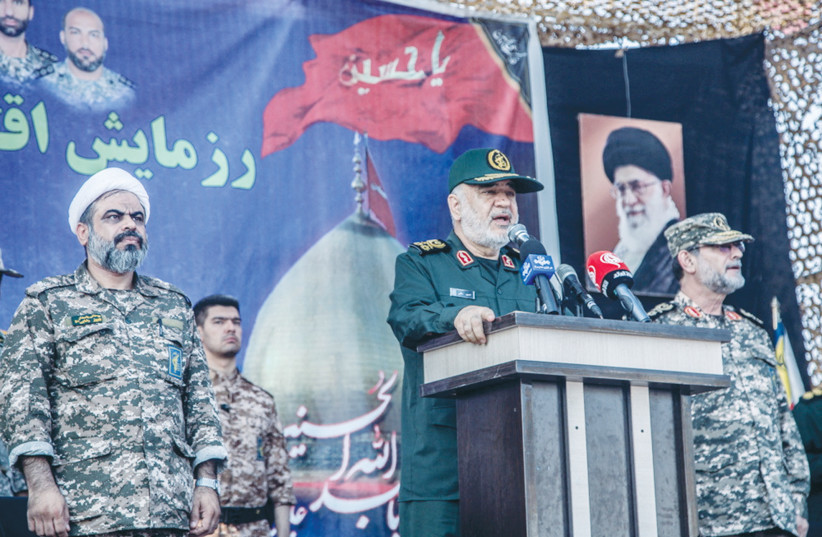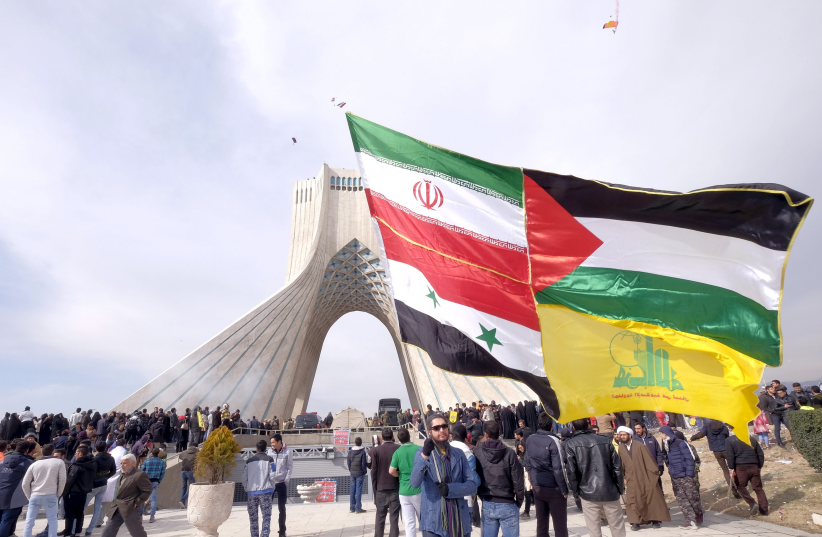Syria is once again in the spotlight in the Middle East, after the US carried out airstrikes against Iranian-backed militias on Wednesday. This follows more than 40 attacks on US forces by Iranian-backed militias in Iraq and Syria.
Iran has openly bragged in its media about these attacks. The US has, so far, responded twice.
On October 7, the Associated Press reported: “Fighter jets launched airstrikes early Friday on two locations in eastern Syria linked to Iran’s [Islamic] Revolutionary Guard Corps, the Pentagon said, in retaliation for a slew of drone and missile attacks against US bases and personnel in the region that began early last week.”
On October 7, the Associated Press reported: “Fighter jets launched airstrikes early Friday on two locations in eastern Syria linked to Iran’s [Islamic] Revolutionary Guard Corps, the Pentagon said, in retaliation for a slew of drone and missile attacks against US bases and personnel in the region that began early last week.”
One month later, on Wednesday, US Secretary of Defense Lloyd Austin said America, at the direction of US President Joe Biden, had conducted a “self-defense” strike on a “facility” used by the Iranian IRGC in Syria. The strike was carried out by two F-15s. The US has said further action could be taken if the threats continue, as Iran remains undeterred.


US Central Command said: “Following a series of attacks against US persons in Iraq and Syria, US Central Command (US CENTCOM) forces conducted an airstrike against a facility in Syria used by Iran’s IRGC and affiliated groups. We will take all necessary measures to defend our people against those who are responsible for the attacks and will respond at a time and place of our choosing.”
CENTCOM has many more assets in the region now after the Hamas attack on October 7: two US aircraft carriers and other vessels in its armada, even more aircraft, and a submarine. Yet Iran’s allies also continue attacks on the US, with the Houthis in Yemen targeting a US Reaper drone just this week.
“Syrian state media said Israeli airstrikes hit military sites in southern Syria on Wednesday, causing material damage,” Al Arabiya reported Wednesday. “At approximately 22:50 p.m., the Israeli enemy carried out an air attack from the direction of Baalbek in Lebanon, targeting some military points in the southern region, causing some material losses,” official news agency SANA said, quoting a military source.
Last month, “Israeli strikes had put Syria’s two main airports in Damascus and Aleppo out of service several times in two weeks,” Al Arabiya also reported.
White House spokesman John Kirby told CNN: “We know that it had a practical impact on their ability to arm these groups, but also to send a strong signal of deterrence,” adding that it was not clear how much Iran has been deterred.
Iran brags
Pro-Iranian news site Al Mayadeen reported Thursday: “The Islamic Resistance in Iraq announces the targeting of the American base in the Green Village deep in Syria, the American base in Al-Shaddadi, south of Al-Hasakah, and the one in the Conico gas field in the countryside of Deir ez-Zor.”
Clearly, Iran is openly bragging about its attacks on US forces.
The 40 attacks that took place before Wednesday may rise, and they could reach unprecedented levels if Iran is not deterred. Pro-Iranian militias carried out about 70 attacks prior to October 7. The attacks are now spreading, and Iran has encouraged its militias to attack the US because Tehran believes this is a war against the US and Israel. Iranian-backed groups have said they see this as a joint conflict, a “single” front, a concept that Iranian media – and the Houthis – have broadcast.
In 2018, the Syrian regime retook an area near the Golan Heights, thrusting it back into the spotlight. At the time, US-Hamas tensions also escalated. Foreign reports said Iran had moved missiles to Iraq’s Anbar province, making it possible for Iraq and Syria to retake the border area of Albukamal and Al-Qaim. Iran then established its Imam Ali base in Syria, and Kataib Hezbollah in Iraq moved units to Syria.
Israel has systemically opposed this Iranian entrenchment in Syria, known as the “war between the wars” campaign, or MABAM in Hebrew. In 2019, tensions grew as Iran sought to move Hezbollah members and drone threats toward the Golan. In the years since, the threats have only grown.
Iran began attacks on US forces in 2019. A while later, in January 2020, the US killed IRGC commander Qasem Soleimani in Iraq, and the attacks continued. The US has carried out retaliatory strikes in the past, usually when US soldiers or contractors have been killed or wounded. This puts a low bar in terms of retaliation.
Iran feels impunity to use rockets and other threats against US forces. It is clear now that the conflict is growing in Syria. Tehran has also sought to use militias to attack the US-backed Syrian Democratic Forces.
The US has a deconfliction mechanism with Russia in Syria in terms of use of the airspace, but Russia-US tensions have escalated. Turkey-US tensions have also grown, creating a combustible mix in Syria. This week brought more wood to the base of that potential fire.
